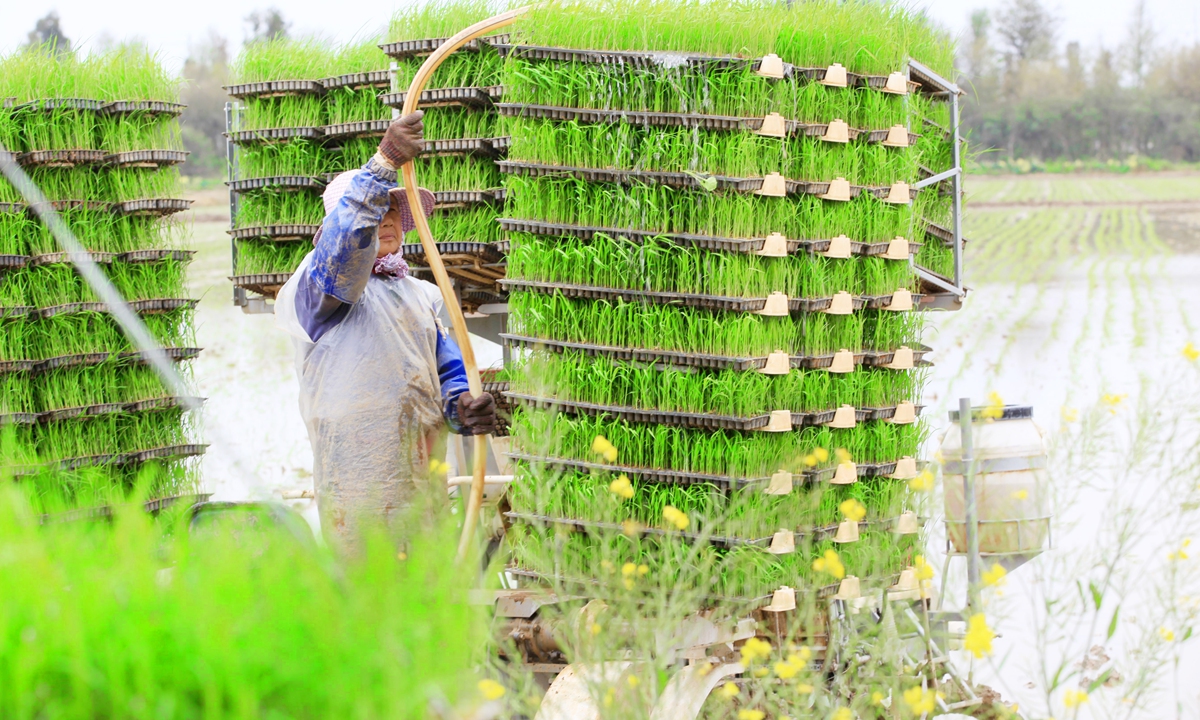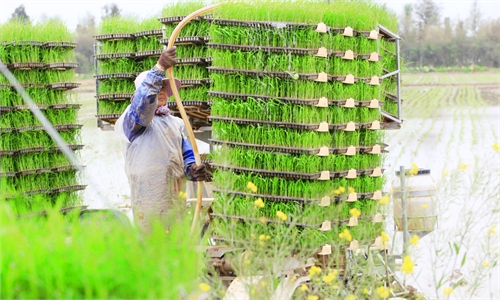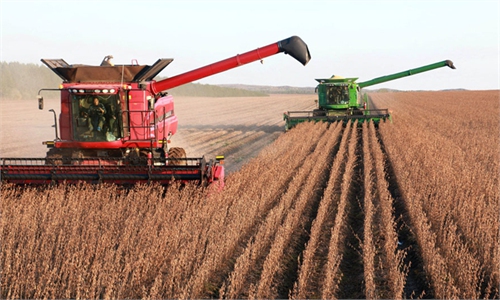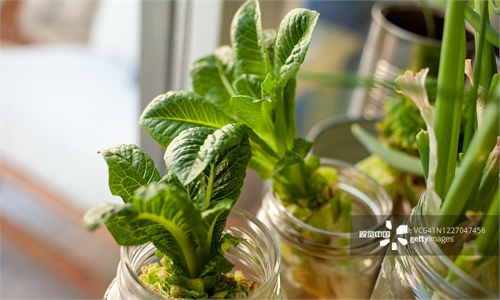
A farmer waters rice seedlings in Taizhou, East China's Zhejiang Province. Photo: VCG
With the return of the crew of China's spacecraft Shenzhou-13, a total of 12,000 seeds finished their space breeding journey, which is expected to enhance food security, as seeds are as important as chips in the semiconductor industry.
Seeds of clover, oats, rice, edible mushrooms and cabbage were carried by the Shenzhou-13 into space and brought back to Earth on April 16, after 183 days in space.
It has been 35 years since China's first space seed breeding effort in 1987, and nearly 1,000 new species have been created, of which 200 have displayed outstanding performances, according to media reports.
Space seed breeding uses cosmic radiation to mutate the genes of seeds sent into space, in order to create new species for greater variety.
China's space seed project has bred lots of vegetable and fruit species, including such common items as apples, Li Guoxiang, a researcher at the Rural Development Institute of the Chinese Academy of Social Sciences, told the Global Times on Wednesday.
China's space seed breeding has made a great contribution to the country's food security and environmental protection.
The area under cultivation for grains, vegetables, fruits and other plants developed by space seed breeding has surpassed 2.4 million hectares, and generated economic benefits of over 200 billion yuan ($30.51 billion), media reported.
"Some of the seeds will be used for scientific research and others will be used for breeding," said Yang Hongshan, an expert at the Lanzhou Institute of Husbandry and Pharmaceutical Science of the Chinese Academy of Agricultural Sciences.
Yang said that sending seeds into space is just the first step, and the most essential phase is the experimental work done after the return to Earth. The time for that work varies depending on the species.
"For instance, it takes 10 years to breed a new species of clover, and oats may take seven to eight years," said Yang.
Clover is one of most important feed materials for livestock which remains a shortcoming for the country's agricultural sector.
"China has to import 1.3 million to 1.5 million tons of clover each year. Clover seeds from space may accelerate Chinese clover species breeding and ensure the development of this 'chip' in agriculture," said Wang Tao, professor at China Agricultural University.
China's space seed breeding level also reflects the nation's advancing aerospace technology, Li noted.
"There are only a few countries in the world with mature aerospace technology, and China's level of space seed breeding technology is at the world-class level," Li said.
Global Times



